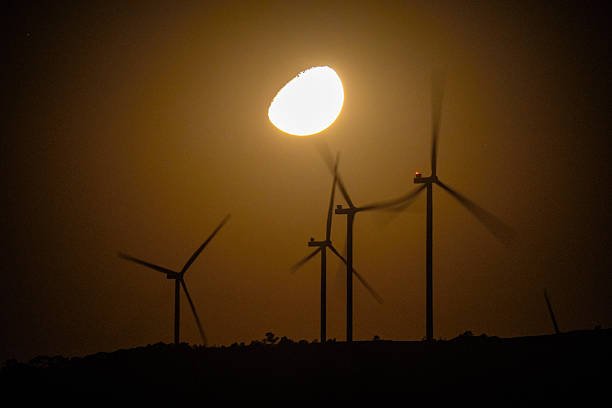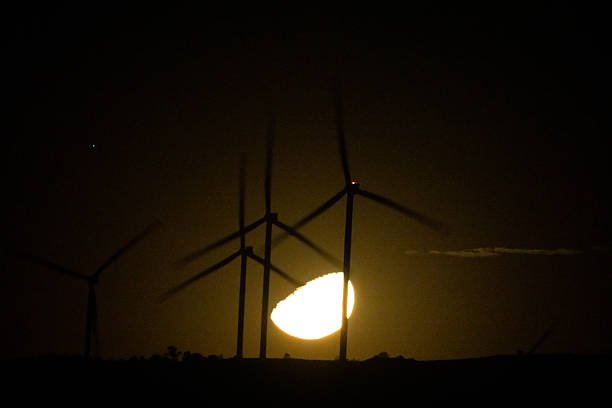My thoughts and experiences about the lunar eclipse.
Welcome to my scientific blog.
Sincere greetings to the dear friends of the Sci-Fi Multiverse. Hope everyone is healthy and having a great day. Today I am here with a wonderful astronomical event the lunar eclipse.I want to share some information and thoughts about this extraordinary natural scene, I hope you like it.I am @naturaluttom.

Thumbnails are created with Canva.
Image Source
We know that the moon does not give off light on its own. The light of the sun falls on the moon, and that light is reflected and reaches our eyes. But sometimes it happens that the Earth comes between the moon and the sun. Then the Earth blocks the light from falling on the moon. As a result, the moon goes dark, which we call a lunar eclipse. This usually happens at night and when the entire moon is erased, it is called a full lunar eclipse. And if only part of the moon is dark, then it is called a partial lunar eclipse. Although this event is not very rare, it is not visible from everywhere.

When the full moon is seen in the night sky, an unearthly beauty spreads. But sometimes the light of the moon suddenly decreases, or disappears completely. When such an event happens, it is called a lunar eclipse. As a child, we used to like to watch this scene from the window or on the roof. Today, in this article, I will try to explain in simple terms how a lunar eclipse occurs, why it occurs, and from a scientific point of view.
We basically know that a lunar eclipse occurs only when the sun, earth, and moon are in the same straight line. However, it has to happen on the night of the full moon. Because then the moon is on the opposite side of the sun.
There are three types of lunar eclipses:
1. Total lunar eclipse,
Here the earth's shadow falls completely on the moon. The moon then turns reddish or copper, which is called a Blood Moon.
2. Partial lunar eclipse,
Some part of the earth's shadow falls on the moon, as a result of which a part of the moon becomes dark.
3. Umbral and penumbral lunar eclipse,
When the light shadow or penumbra of the earth falls on the moon, very light darkness is seen. This is often not even visible to the naked eye.
We basically know that the shadow has two parts:
1. Umbra, where sunlight cannot reach at all.
2. Penumbra, where some light can reach, so the shadow is lighter.

The sky, planets, stars and cosmic events have always fascinated me. Recently, while studying lunar eclipses, I have come to know many amazing facts, which I am presenting here in my own way.
First of all, lunar eclipses do not occur on all full moons. Because the moon's orbit is not directly equal to the earth's orbit; it is tilted at an angle of about 5 degrees. As a result, even during a full moon, the sun, earth and moon do not always come in a straight line. When these three cosmic objects fall in a line, the earth's shadow falls on the moon, and we see a lunar eclipse. Scientists call this condition "syzygy".
According to my observations, lunar eclipses usually last for a few hours and can be seen with the naked eye, without any risk. Unlike a solar eclipse, special glasses are not required. It is a very beautiful and touching moment. Many of us know that there are some folk beliefs prevalent in our society—such as not eating food during an eclipse, pregnant women are advised not to go out, etc. I personally see these as innovations, because they have no basis in science. In ancient times, people were very afraid of lunar eclipses, some thought that someone had bitten the moon, some said that it was the anger of the gods and goddesses. But now we know that it is a natural phenomenon in space. Astronomers can now predict in advance when a lunar eclipse will occur.
I myself try to watch lunar eclipses with telescopes and mobile cameras. With the help of technology, it is now possible to watch them live. During this time, scientists collect new information about the structure and weather of the moon, which encourages me even more.

In scientific terms, lunar eclipses do not have much effect on the human body or mind. However, some people may experience a little mental instability or emotional differences. Also, many religious rituals and ceremonies observe some rules during this time, such as fasting, bathing, or stopping worship. About 2 to 5 lunar eclipses occur every year, but not all of them are visible from all places. These eclipses follow a specific Saros cycle, which returns every 18 years. This is really amazing.
A thing as familiar as the moon, and how mysterious it is! Lunar eclipses are not just a scientific phenomenon for me, but a living proof of the mysterious beauty of the sky.
I am ending today's writing here with best wishes and thanks. I am sincerely grateful for your valuable time and attention after reading the post. Don't forget to tell me in the comments how you felt. If you have any questions, InshaAllah, I will try to answer them to the best of my ability. If you enjoyed this article, then that is the reward for my hard work. See you again very soon. 🌸
(Translation: Google Translate)
(Thumbnail edited with Canva)

Nice post, @naturaluttom! 🌑 Always cool to see the science behind these awesome natural events. 👍
Thank you very much for encouraging me.